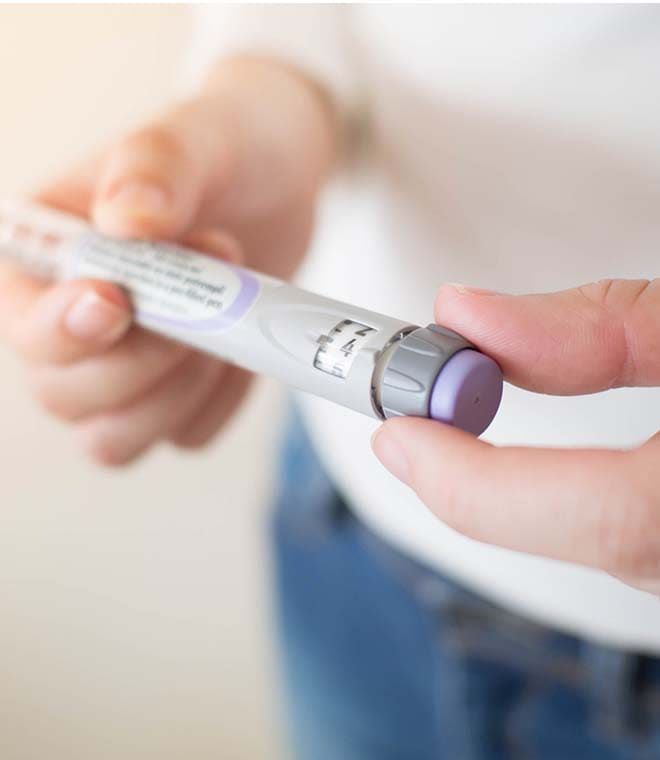Health
How to test your blood glucose (sugar)
By Nora Saul, MS, RD, CDE; Updated by: Jen Matz, MPH Nov 06, 2023 • 8 min
If you have diabetes, testing your blood sugar at home with a blood glucose meter can be an important part of your treatment plan. Diet and exercise and sometimes medications are used to control diabetes. Your blood glucose meter will likely become an important part of your life as you manage diabetes. To help you get comfortable with the practice, let's look at blood glucose (sugar) monitoring in more detail.
Why you should test your blood sugar
Self-testing is sometimes called self-monitoring of blood glucose (SMBG). It's an important tool that can tell if your diabetes treatment plan is working. While your healthcare provider will still check your hemoglobin A1C levels when you come in for a checkup, many people need to augment this with blood glucose monitoring at home. The A1C test gives a good overall picture of how well your blood sugar has been managed over the past three months. But testing your blood sugar at home can provide a quick measurement of your blood sugar level at any given time. The results of home blood sugar testing can help you make appropriate adjustments to your diabetes medicine, diet and/or level of physical activity. Your diabetes healthcare team will give you specific advice on how to keep your blood sugar levels in a healthy range.
Who should test their blood sugar
Your healthcare provider will tell you if you need to test your blood sugar at home. In general, you'll need to test your blood sugar if you have diabetes and:
- Take insulin or other medications that can cause hypoglycemia (low blood sugar)
- Have a difficult time controlling your blood sugar
- Suspect you have low blood sugar: Symptoms can include headache, sweating, hunger, jitteriness, confusion, dizziness, irritability, weakness, or a fast or irregular heart rate
- Experience low blood sugar without warning signs
- Have ketones from high blood sugar
- Are sick
- Are pregnant
How to test your blood sugar
There are a variety of blood glucose meters or glucometers available, including high-tech options that attach to smartphones and upload test results that can be shared with your healthcare provider. But whether you get the latest state-of-the-art model or a basic version that simply takes and stores readings, all meters operate in a similar manner.
Meters have four basic parts: the meter, a lancing device, lancets and test strips. The lancing device holds the lancets (mini straight pins) used to prick your skin to draw blood. To check your blood sugar, follow these steps:
- Wash your hands
- Place a test strip into the meter
- Prick the side of your fingertip close to your nail with the lancet to get a drop of blood
- Hold the edge of the test strip to the drop of blood so that it gets onto the test strip
- Wait for the results; the meter will display your current blood sugar level
Note that some meters allow you to test at other sites of your body besides your fingertips. You may be able to test from your forearm, thigh or fleshy area of your hand. However, it’s important to know that testing from sites other than your fingertips may not be as accurate, especially during exercise or after a meal. During these times, it may be a good idea to test from your fingertips.
Some meters may work a little differently, so follow the instructions that come with your meter closely. If you have any questions about how to test your blood sugar, ask your healthcare provider or diabetes educator to show you how to do it correctly.
When to test your blood sugar
The number of times that you need to check your blood sugar each day depends on the type of diabetes you have, the type of medicine you take to treat your diabetes, and how well your blood sugar levels are controlled. For example, people who take insulin injections or use an insulin pump may need to check their blood sugar more frequently than those who take diabetes pills. Some people test their blood sugar before eating meals or snacks, before and after exercise, when they feel sick, or when they think their blood glucose is low. Talk with your healthcare team about how often you should check your blood sugar.
What the results mean
Your healthcare provider will give you individualized blood sugar goals. General blood sugar guidelines for people with diabetes are as follows:
- Before a meal: 80-130 mg/dL
- One to two hours after meals: less than 180 mg/dL
Remember that food, physical activity, stress and medications each affect your blood sugar levels. While blood sugar levels above or below goal can happen from time to time, a pattern of high and low readings may mean that your treatment plan needs to be adjusted. This is why it's important to review not just the current reading on the meter, but to look at trends over time. Keep track of your blood sugar readings, whether it be in an app or notebook. Bring the log with you to appointments so your healthcare provider can review it. This information can help them make decisions about your care.
What is continuous glucose monitoring?
Continuous glucose monitoring allows you to know your blood sugar level at any time. This helps you notice patterns in blood sugar, and it can help you make decisions about food, exercise and medications. A continuous glucose monitor works with a tiny sensor that's inserted under your skin, often in your abdomen or arm. The sensor measures your blood sugar every few minutes and sends the reading to the monitor, which you can keep in your pocket. Some monitors transmit blood sugar readings directly to an app or phone. Continuous glucose monitors can be part of an insulin pump or an individual device.
Many people who use continuous glucose monitors have type 1 diabetes. Your healthcare provider may suggest using this tool if you're on intensive insulin therapy (tight blood sugar control), have hypoglycemia unawareness (when you don't notice signs of low blood sugar) or often have high or low blood sugar.
Testing your blood sugar at home as often as directed can help you learn if your diabetes treatment plan is working. Work with your healthcare team to learn how to interpret patterns in your readings and make adjustments in your food, exercise and medication regimen to help keep your blood sugar in a healthy range.
Clinically reviewed and updated November 2023.
Sources:
- https://www.uptodate.com/contents/self-monitoring-of-blood-glucose-in-management-of-adults-with-diabetes-mellitus
- https://www.niddk.nih.gov/health-information/diabetes/overview/preventing-problems/low-blood-glucose-hypoglycemia
- https://diabetes.org/living-with-diabetes/treatment-care/checking-your-blood-sugar
- https://www.niddk.nih.gov/health-information/diabetes/overview/managing-diabetes/continuous-glucose-monitoring
- https://www.mayoclinic.org/diseases-conditions/diabetes/in-depth/blood-sugar/art-20046628
- https://www.cdc.gov/diabetes/managing/managing-blood-sugar/bloodglucosemonitoring.html
- https://www.cdc.gov/diabetes/managing/flu-sick-days.html


